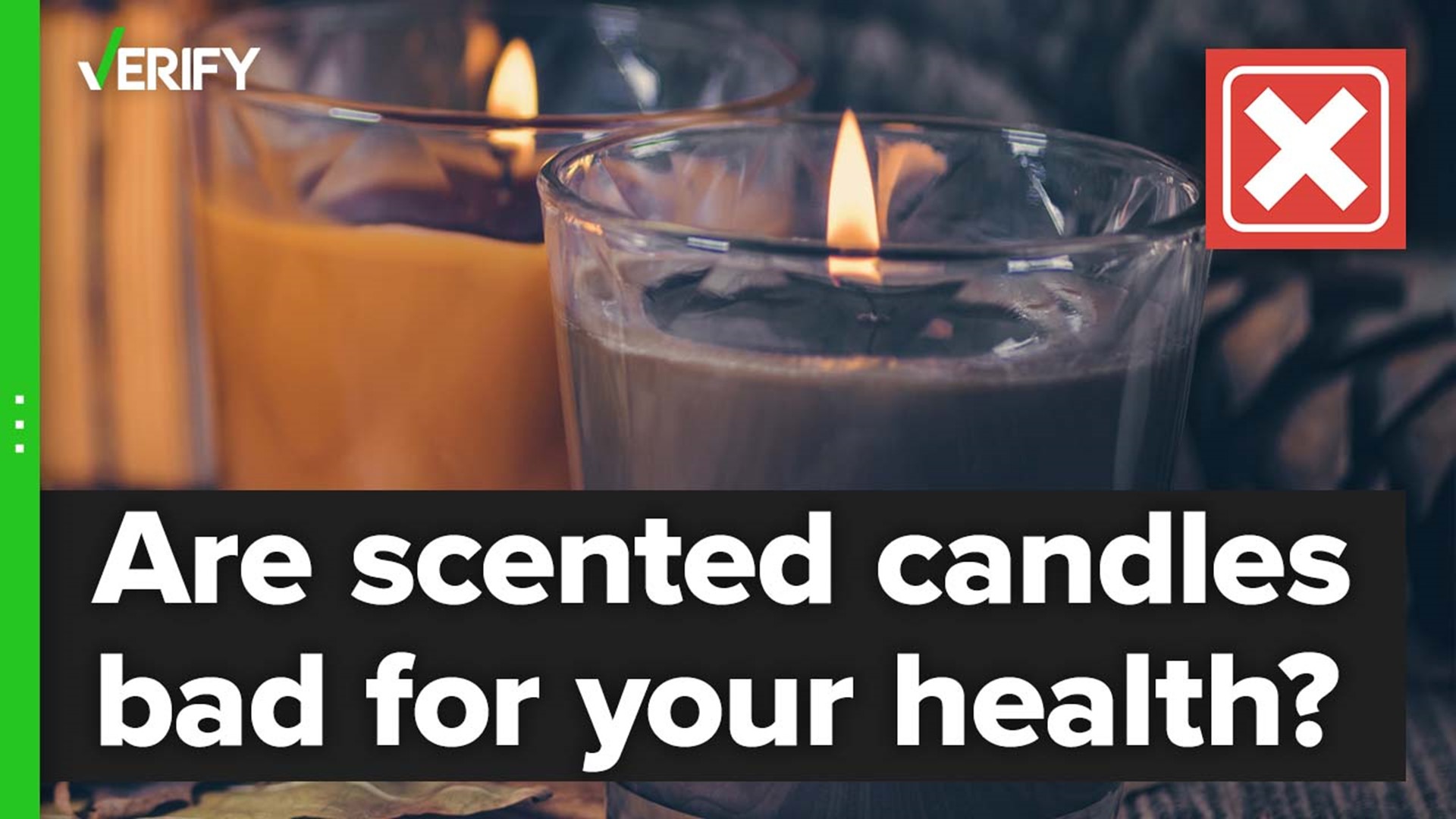The holiday shopping season is officially underway. During this time of year, many people are buying gifts for their family and friends, including the always-popular scented candle.
But there have been several claims online and some studies that suggest burning scented candles may be harmful to humans.
THE QUESTION
Is burning scented candles bad for your health?
THE SOURCES
- U.S. Environmental Protection Agency (EPA)
- European Candle Association (ECA)
- National Candle Association (NCA)
- The Research Institute for Fragrance Materials (RIFM)
- Hans Plugge, toxicologist, chemist and principal at Safer Chemical Analytics LLC in Columbia, Maryland
THE ANSWER
No, burning scented candles is not bad for your health.
WHAT WE FOUND
When scented candles burn, they release volatile organic compounds (VOCs) and other particles into the air. VOCs, which are composed primarily of carbon, oxygen and hydrogen, are defined by the U.S. Environmental Protection Agency (EPA) as “organic chemical compounds whose composition makes it possible for them to evaporate under normal indoor atmospheric conditions of temperature and pressure.”
Humans are regularly exposed to VOCs in nature, and nearly all fragrance ingredients in scented candles are VOCs, according to the National Candle Association (NCA), a trade association that serves as the leading technical authority on candle manufacturing, science and safety in the U.S. To ensure fragrances from candles are safe, the NCA says fragrance formulas are reviewed to meet the safety standards established by the International Fragrance Association (IFRA).
“Each ingredient in the fragrance and the finished product is required to meet the specifications set down by IFRA to be compliant with the standard,” said the NCA. “If the fragrance and product meet the standard, then the fragrance VOCs in that particular product are considered safe for human use.”
According to the NCA, there is a maximum amount of fragrance that can be added to a candle before it no longer burns cleanly or properly. The NCA also says the federal government and several states have established VOC regulations for many consumer products, including scented candles, which limit the concentration of VOCs the product can contain.
“These VOC limits on consumer products are not based on any health concerns about the VOCs themselves. Instead, the limits exist to minimize the interaction between VOCs and other chemicals in our atmosphere,” according to the NCA.
In a peer-reviewed study published in 2014, a team of researchers studied the potential consumer health risks associated with candle emissions, which were “characterized by comparing the exposure concentrations with existing indoor or ambient air quality guidelines or, where not existent, to established toxicity thresholds.” The researchers concluded that “under normal conditions of use, scented candles do not pose known health risks to the consumer.”
The Research Institute for Fragrance Materials (RIFM) is a nonprofit organization that was formed in 1966 to study every ingredient used explicitly for its fragrance-producing abilities. In an email, the RIFM told VERIFY “the exposure from burning candles to the ingredients used for their scent properties is so low that they pose no significant risk to human health.”
“RIFM has spent more than half a century studying these ingredients, using real-world aggregate exposure data from North American and European consumers. The scientific data tells us that even the highest users of scented candles and other fragranced products are not putting themselves at any appreciable risk of harm,” said RIFM.
Hans Plugge, a toxicologist and chemist with over 40 years of experience assessing the hazard and risk of a variety of chemicals, also told VERIFY the risk of exposure to harmful chemicals from scented candles is “extremely low.”
“Some of these chemicals are indeed rated as hazardous, but they're generally released in extremely tiny quantities so they’re not very risky,” said Plugge. “I don't think there's much of a problem with the release of volatile organics from candles simply because the temperature of a candle is so high that it would immediately burn to carbon dioxide. That's not to say there isn't any, but most of it would be immediately burned, otherwise, the candle wouldn't stay lit.”
Paraffin wax is a by-product of petroleum and the most commonly used wax by candle manufacturers. In a non-peer-reviewed study, researchers at South Carolina State University claimed long-term exposure to emissions of paraffin wax candles could be hazardous to human health and cause poor indoor air quality.
The NCA and the European Candle Association (ECA) released separate statements refuting the researchers’ claims and challenging the scientific validity of the study. In the ECA’s statement, they cited a 2007 study conducted by a team of international researchers that tested candles made from every major wax type and analyzed the emissions of more than 300 chemicals. The study found that the level of chemicals released by each type of candle was well below the amount that would cause human health problems.
Although paraffin wax is the most common wax used in candles, the NCA says natural waxes, such as beeswax, soy wax, palm wax, as well as gels and synthetic waxes, are also frequently used by candlemakers. Plugge says that just because a candle contains natural ingredients that doesn’t necessarily make it “safer” than a paraffin wax candle because the natural candle can also contain potentially hazardous ingredients. However, he says, when burned, candles made with natural wax do not release enough chemicals to make them risky to humans.
The NCA, along with popular candle brands Bath & Body Works and Yankee Candle, all share candle safety tips on their websites.

